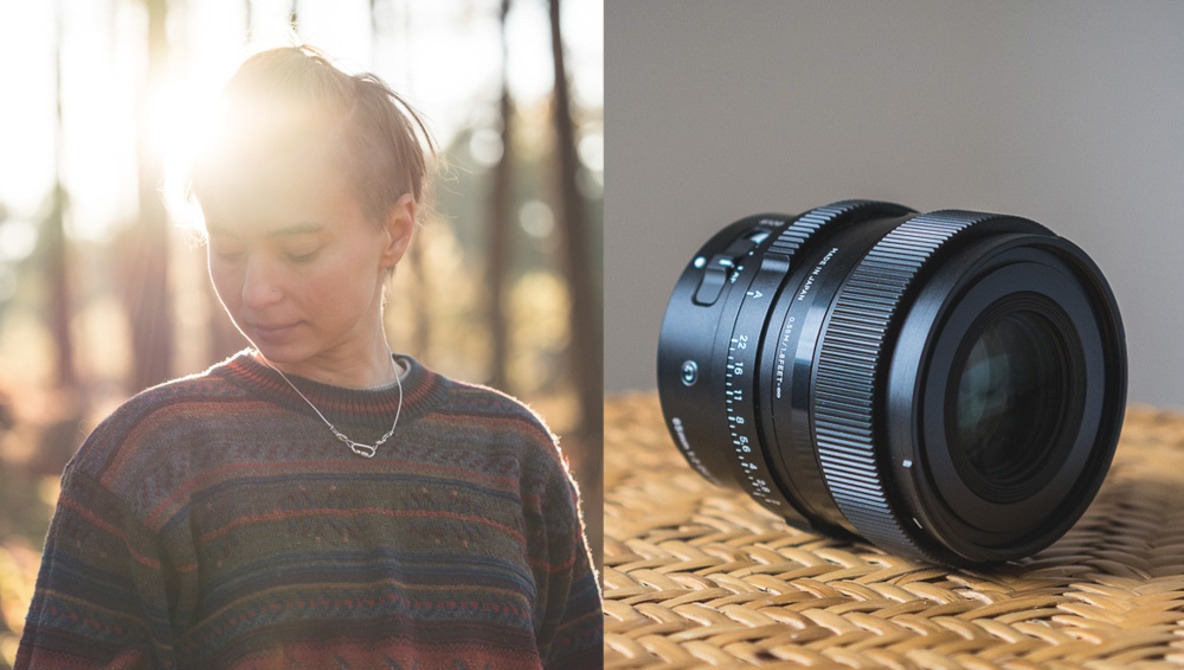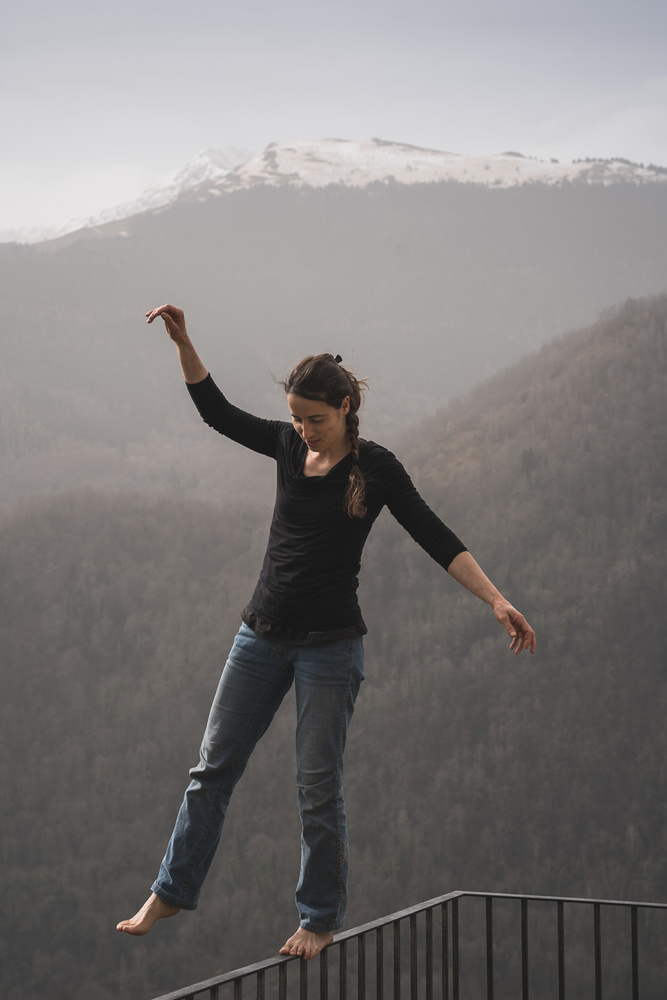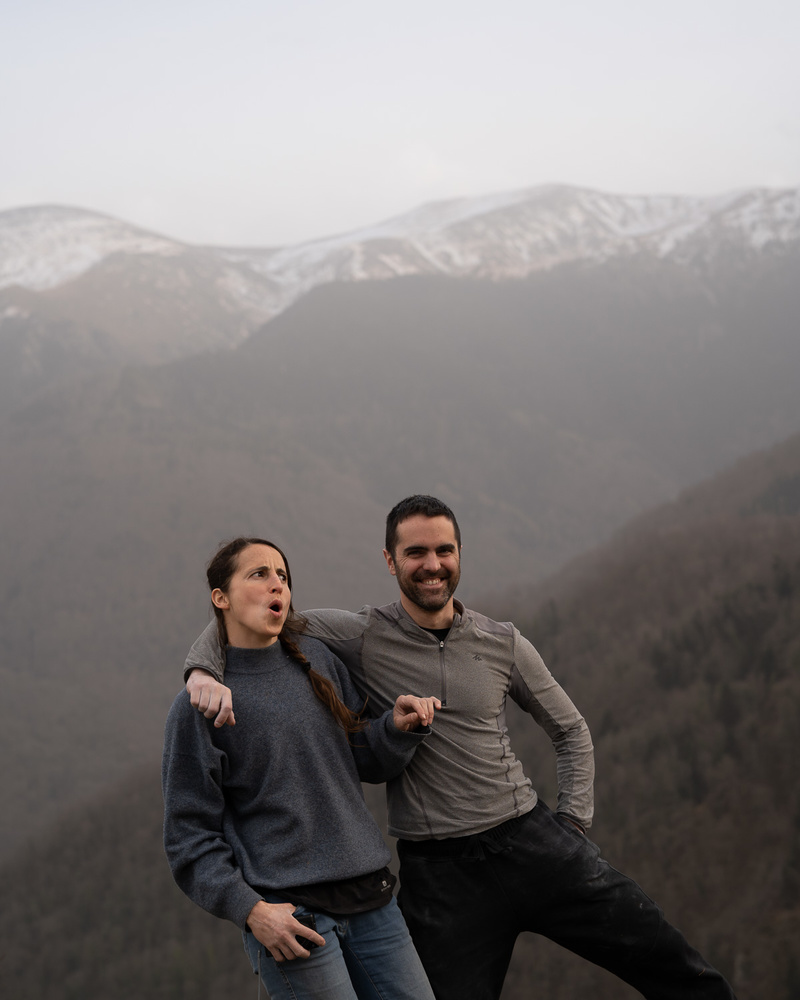A few months ago, Sigma released four rather distinctive, compact lenses for Sony and L-mount cameras. The most curious of these is the 65mm f/2 DG DN, offering a touch of speed, excellent sharpness, and a slightly odd focal length. How does it perform?
Sigma’s design choices for its I-series range of Contemporary lenses, i.e. the 24mm f/3.5, 35mm f/2, 45mm f/2.8, and 65mm f/2 — are intriguing. When it comes to affordable, not-quite-so-fast alternatives to Sony’s lumps, I’m used to the plastic constructions of Rokinon/Samyang lenses. By contrast, Sigma has opted for an all-metal body, giving the compact lenses some chunk and, one assumes, the knowledge that this lens is built to last.
One Ring To Rule Them All?

Making them even more distinctive, Sigma has graced each lens with an aperture ring — clicking and not declickable, neither with a switch nor via a round trip to the Sigma factory — that has been designed with a serious amount of care. This is not an afterthought, thrown on to add a bit of quirkiness; instead, it’s an attempt to give a sense of tactile satisfaction to the shooting experience that prompts comparisons to using a Leica. The physicality of shooting with a vintage lens has clearly been an inspiration, and Sigma has pulled it off well. It’s probably a stretch to say that the aperture ring is a joy to use, but I’m not sure that I’ve ever enjoyed changing aperture quite so much. I suspect that a lot of effort has gone into making it replicate the look and feel of the mechanical aperture ring of a vintage lens.
Specifications and Build
Before I gush further about how nice it is to turn a ring, here are some specifications for the Sony-mount version of the 65mm f/2 that I’ve been using over the last few months:
- Focal Length: 65mm
- Maximum Aperture: f/2
- Minimum Aperture: f/22
- Angle of View: 36.8°
- Minimum Focus Distance: 1.8’ / 55 cm
- Maximum Magnification: 0.15x
- Optical Design: 12 Elements in 9 Groups
- Diaphragm Blades: 9, rounded
- Focus Type: Autofocus
- Image Stabilization: No
- Filter Size: 62 mm (Front)
- Diameter: 2.8” (72 mm)
- Length: 3” (76.2 mm)
- Weight: 14.3 oz (405 g)
- Price: $699
In the hand, it has a reassuring solidity. The all-metal lens hood twists satisfyingly, and the MF/AF toggle switch has a reassuring umph to it. A plastic lens cap can be swapped out for a magnetic version (included in the box), but if you have the lens hood in place, the cap can only be removed if you have the fingers of a very small child, and even then, you might struggle. This seems a slightly surprising oversight given the attention to detail elsewhere.

When the haze and the sunshine have a chat and decide to play at being a massive softbox. 1/400, f/10, ISO 100.
The aperture ring offers 1/3 of a stop increments with a little extra distance between f/22 and “A,” and I have to prevent myself from turning it just for fun. The focusing ring is so smooth that it makes absolutely no noise. And yes, this makes no difference to how you focus, but it just feels nice, and for some users, these little touches are important.
While there’s a gasket around the mount, the lens is not fully weather-sealed, which, given the build quality, might strike some as another slightly inconsistent choice from Sigma.
Performance
What with one thing and another, it’s been challenging to put these Sigma lenses to real-world use (my preferred approach for testing lenses), but the Sigma did manage to come with me on a trip to the Pyrenees before restrictions in France became more severe. The 65mm joined me on our day trips, and as someone who loves small lenses, the size and relatively low weight were appreciated. It’s slightly bigger than your average nifty fifty, and the metal construction makes it heavier, but all of these lenses are such that you can tuck them in a camera bag and forget about them, or even throw them in a (large) jacket pocket as I did on various dog walks.
The metal lens cap is a nice touch, and on days where you don’t mind leaving the lens hood behind, it’s fun to use. Sigma has a magnetic cap-holder available to purchase separately, which is functional and another quirky aspect to these lenses.
Sharpness on the 65mm is excellent and autofocus was snappy: not lightning-fast, but more than adequate for the majority of situations. Eye autofocus tracked consistently, and the resulting images were pleasing if a little clinical, thanks to the good contrast and impressive sharpness. Other than its slightly odd focal length, this lens simply isn’t going to offer the excitement of a faster lens, but it goes a long way to making up for this through the refinement of its physical design. If such things aren’t important to you, you might want to stick with your 85mm f/1.8.
65mm is a strange choice, especially given that Samyang/Rokinon filled a gap that few of us realized existed when it released the 75mm f/1.8 last year. The super lightweight construction (8.11 oz versus 14.3 oz), tiny form factor, and refreshingly affordable price of the Rokinon ($399) made it quirky and yet appealing, bringing a chuck-it-in-your-bag-and-forget-it quality that isn’t quite there with the Sigma. The trade-off is that the Sigma is definitely sharper, has slightly snappier autofocus, doesn’t feel like you’re using a toy, and is almost twice the price.
Like the Rokinon, the Sigma 65mm is something of a heavy breather, one of the trade-offs when it comes to compact lenses. The motors in the Sigma are quiet, low-light focusing is solid, and it fared well when shooting strongly backlit portraits, probably thanks to the fact that it manages to maintain decent contrast despite some demanding conditions. Bokeh is smooth, flaring is well controlled, vignetting is minimal, chromatic aberrations are hard to find, the minimum focusing distance isn’t anything to write home about, and the corners wide open will please the pixel-peepers.
65mm: An Odd Length
65mm has proven to be an enjoyable length, giving a touch more separation than the sometimes-dull nifty fifty but without the claustrophobia of the classic 85mm telephoto portrait lens. During our explorations in the mountains, it gave a nice balance, allowing me to capture distant peaks at middling apertures before twisting the aperture ring (did I mention how good the aperture ring is?) down to something wider to grab a quick portrait. Being surrounded by snow-capped mountaintops, I didn’t want the compression and bokeh-heavy separation of something longer and faster for these portraits, and nor would I want its bulk. Thus, the 65mm f/2 makes a good compromise as a general-purpose lens, giving a reasonable level of separation and allowing you to grab more intimate shots without finding yourself having to back up in order to give your subject more context.
The 65mm length will not be for everyone, but I think it’s an ideal compromise if you’re searching for something compact that’s suited to everyday use when you need a tiny bit of reach. Furthermore, whatever you think of the focal length, Sigma should be given plaudits for giving us something unconventional (something of a habit for the company), broadening further the extensive range of lenses for Sony, and adding depth to the L-mount alliance.
The focal lengths aside, these lenses seem to stand alone across most ecosystems, blending vintage tactility with modern optics. I tend not to manual focus with autofocus lenses, but the feel of this focus by wire ring — so smooth and silent — might be as close to old-school mechanical focusing as it’s possible to get. It’s these small touches — the metal lens hood, the aperture ring, the metal construction, the solid feel — that give the I-series a refined finish while still being relatively affordable. On my boxy Sony a7 III, a camera almost entirely devoid of aesthetics, this type of finesse seems almost out of place; for Leica users, the I-series will likely feel right at home.
What I Liked
- beautifully crafted faux-vintage aperture ring
- the silky smooth focusing ring
- excellent sharpness
- quiet, snappy autofocus
- compact and solid build
What I Didn't Like
- unremarkable minimum focusing distance
- focus breathing
- metal lens cap doesn't pair well with the lens hood
Conclusion
Compact lenses mean compromises, and Sigma has made them intelligently. Rather than a lightweight build, a boring aperture, or a drop in sharpness, it's opted for solid construction, eye-wateringly sharp optics, and classic styling. Leica owners can buy a lens that's eminently affordable without feeling self-conscious, and Sony users can have a taste of the tactile shooting experience offered by other camera systems.
If you're passionate about taking your photography to the next level but aren't sure where to dive in, check out the Well-Rounded Photographer tutorial where you can learn eight different genres of photography in one place. If you purchase it now, or any of our other tutorials, you can save a 15% by using "ARTICLE" at checkout.



















would be lovely if they also made a 20 mm 2,8 with good optics and without the hefty weight of modern lenses. I don`t need ultra wides with f1.4 and 2 kilos
i absolutely agree with you
Fist off thank you for this insightful review. It was through the eyes of a photographer who uses such lenses.
I just purchased this lens and it’s should be here tomorrow. I shoot live music photography and videography and am excited about this focal length. I was hoping for someone to actually make this focal length actually. Yes I wish it focused closer . I also shoot closeup nature and wildflowers and don’t have a close focusing lens in this range .
As for live music photography I shoot 70mm a ton with my 70-200 . I like the story aspect and a short tele . The 50 just never got it for me . I sold it and got the also very clinical Sigma Art 40mm and the 28mm Art . Love them both and shoot the 28 a lot . It has something special about it and I love that focal length.
The 65 seems like the 28 of wide angle . It’s a tweezer that can tell a story .
I hope the lens lives up to expectations. 😊
Hey Andy , after shooting this lens for a pretty good while now for photos ( live music) and live music video, here’s where I stand . WOW ! Yes IT’s absolutely amazing for my style of live music photography and videography. I love it so much for photography on my little Sony a7siii’s . That modern hard edged sharpness you want in much of the live music photography. Mix that with the old school lens flare that softens an image is perfect.
The way the lens renders overall and especially the oof background lighting I love . There is a glow to the lights that I particularly like a lot . I’ve read some reviews where this was considered a negative. Not for me . I like softness to my bokeh.
Bokeh quality is many times not always why I’ll purchase a lens . Like I just bought the older Sigma Art , Nikon F mount 135mm f/1.8 for my Nikon Z9 . I got it because it has no aspherical elements in the lens . A well designed 135mm and above can get away with no aspherical glass if carefully designed ( is what I’ve read).
Aspherical elements can give several different disadvantages to bokeh. One is seeing the grinding marks in the bokeh. Sony has on many of their newer lenses with aspherical glass been talking extra time and care to polish these smoother to eliminate this .
I got that Sigma Art partially for its bokeh quality. Even though I knew Nikon is developing and coming out with a new 135mm S lens soon . I’m really betting that lens will be very expensive for one and over 2k .
So back to Sigma 65mm I series. Well why get back but just end this with get it if you like it’s stated qualities.
That's great! Thanks for the update. 😊